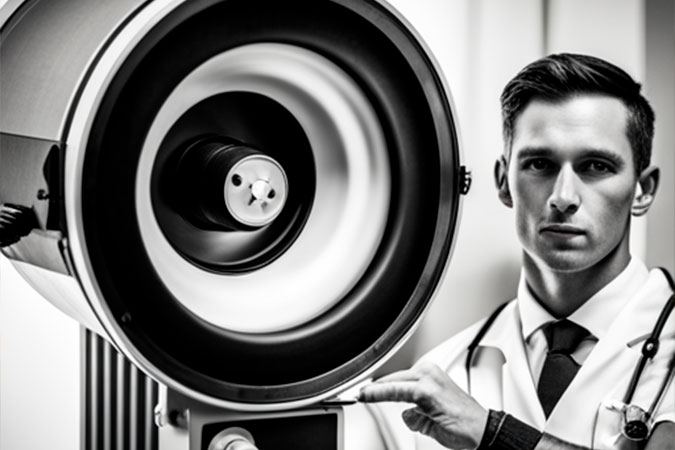The Evolution of Diagnostic Imaging: From X-Rays to Advanced Imaging Techniques
This article explores the evolution of diagnostic imaging in medicine, starting from the discovery of X-rays by Wilhelm Roentgen in 1895 to the technological advancements in the field today. It provides an overview of various imaging techniques, including Computed Tomography (CT), Magnetic Resonance Imaging (MRI), Ultrasound, and Positron Emission Tomography (PET), explaining how they’ve transformed medical diagnosis and treatment. The article underscores the continuous technological progress in imaging techniques that provides increasingly detailed insights into the human body, enhancing our ability to detect and understand diseases.

From X-Rays to Advanced Imaging Techniques
The discovery of X-rays by Wilhelm Roentgen in 1895 laid the foundation for a significant revolution in the medical field – diagnostic imaging. This pivotal moment gave birth to a medical practice that transformed our understanding of the human body. Over the past several decades, parallel advancements in computer technology have facilitated a rapid evolution in imaging techniques. From a single radiographic exposure of Roentgen’s wife’s hand to complex multi-planar images and real-time scanning, medical imaging has come a long way.
The Birth of Radiography: X-Rays
Wilhelm Roentgen, a German physicist, was the first to use X-rays in 1895. He utilized the rays emanating from a cathode ray tube to expose a photographic plate, resulting in the first radiographic exposure, which happened to be an image of his wife’s hand. This groundbreaking discovery of X-rays – a form of electromagnetic radiation invisible to the human eye, allowed clinicians to visualize the internal structures of the human body without the need for surgery. It fundamentally transformed the medical field, creating the discipline of radiology.
The Revolution in Body Imaging
The last three and a half decades have witnessed an unprecedented transformation in body imaging, facilitated by advancements in computer technology. This period has seen the advent of increasingly sophisticated imaging techniques, which have greatly improved the diagnostic capabilities of medical practitioners.
Diagnostic imaging now encompasses an array of techniques beyond traditional X-ray radiography, including computed tomography (CT), magnetic resonance imaging (MRI), ultrasound, positron emission tomography (PET), and more. Each of these methods has its unique advantages and applications.
- Computed Tomography (CT): CT scans produce cross-sectional images of the body using X-rays and computer processing. They provide detailed images of bones, organs, and other structures and are particularly useful for detecting various types of cancer, assessing bone injuries, and visualizing blood vessels.
- Magnetic Resonance Imaging (MRI): MRI uses magnetic fields and radio waves to produce detailed images of the body’s internal structures. It’s particularly effective for imaging soft tissues and organs like the brain, spinal cord, muscles, and heart.
- Ultrasound: Ultrasound uses high-frequency sound waves to create images of structures within the body. It’s commonly used during pregnancy to monitor fetal development, but also has applications in diagnosing conditions in many parts of the body.
- Positron Emission Tomography (PET): PET scans utilize a small amount of radioactive material to help visualize and measure bodily functions, particularly useful in oncology, neurology, and cardiology.
Conclusion
The discovery of X-rays paved the way for a remarkable evolution in diagnostic imaging, forever changing the way physicians diagnose and treat diseases. With the ongoing advancement in technology, these imaging techniques continue to become more sophisticated, providing increasingly clear and detailed images of the human body. These developments promise to further refine our ability to detect and understand disease, shaping the future of healthcare.











